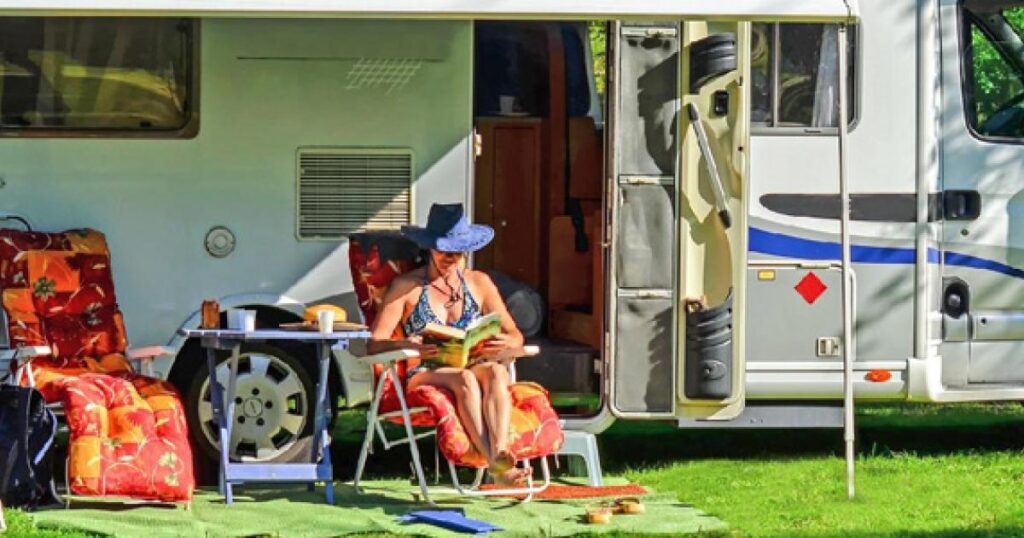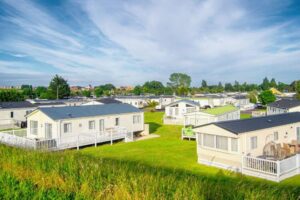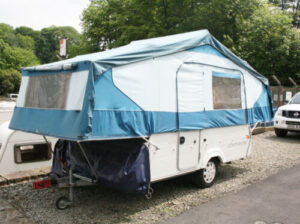Introduction
Brief Explanation of Static Caravans and Park Homes
Static caravans and park homes, while seemingly similar, cater to different living and recreational needs. Static caravans are typically utilized for holiday and seasonal use, providing a mobile, temporary living space that can be stationed at various locations, such as holiday parks. They are designed to be transportable and are often associated with vacationing and temporary stays. On the other hand, park homes are constructed adhering to British Standard BS3632, ensuring they are suitable for year-round living, often becoming someone’s primary residence. They are typically larger, built with more robust materials, and are stationed in residential parks.
Importance of Understanding the Differences
Understanding the distinctions between static caravans and park homes is pivotal for prospective buyers and those interested in alternative living or holiday accommodation options. The differences impact various aspects, including cost, legal considerations, and lifestyle implications. For example, the ongoing costs, legal protections, and the potential for permanent residence vary significantly between the two. Thus, a thorough understanding ensures that individuals can make informed decisions that align with their needs, whether they seek a holiday retreat or a permanent, alternative living space.
Physical Characteristics
Exterior and Interior Design
Static caravans and park homes exhibit distinct differences in their exterior and interior designs, primarily due to their intended use and construction standards. Static caravans, built for mobility and temporary stays, utilize lightweight materials like aluminium and plastic, and often have a compact, efficient interior design to maximize the utility of a smaller space. In contrast, park homes, designed for permanent residence, may employ sturdier construction materials like brick and timber, and often feature more spacious, residential-style interiors, providing a homely ambiance and enhanced comfort for year-round living.
Available Space and Storage Options
Space and storage are crucial aspects where static caravans and park homes diverge noticeably. Static caravans, due to their mobile nature and size restrictions for transport, typically offer limited space, necessitating compact and multi-functional furniture and storage solutions. Park homes, however, are not constrained by the need for mobility to the same extent and therefore can afford to provide more spacious living areas and dedicated storage spaces. This difference significantly impacts the living experience, with park homes offering a closer approximation to traditional home living in terms of space and storage.

Usage and Lifestyle
Suitability for Permanent vs. Temporary Living
Static caravans are predominantly suited for temporary living, providing a comfortable space for holidays and short-term stays. They are often stationed in holiday parks, providing a leisure-oriented environment, and are not typically designed to be lived in throughout the year, especially during harsh winter months due to insulation limitations. Park homes, conversely, are crafted for permanent living, featuring enhanced insulation, heating, and amenities that cater to year-round residence, thereby offering a stable, continuous living environment, often within a residential park community.
Lifestyle and Community Aspects
The lifestyle and community aspects between the two also differ significantly. Static caravan parks often have a transient community with occupants coming and going, aligning with holiday seasons and short-term stays. This can create a vibrant, ever-changing community atmosphere, ideal for those who enjoy meeting diverse groups of people. Park home communities, however, tend to be more stable and established, as residents live there permanently or semi-permanently. This stability can foster a close-knit community, where residents form lasting relationships and engage in communal activities, providing a sense of belonging and continuity.

Buying Guide
Factors to Consider When Purchasing
When purchasing a static caravan or a park home, several factors warrant consideration, including the intended use (holiday vs. permanent living), budget, location, and size requirements. Additionally, buyers should consider the ongoing costs, such as site fees, maintenance, and utilities, and explore the rules and regulations of the park where the unit will be located. It’s also prudent to consider the amenities available, both within the unit and in the surrounding park or community, to ensure they meet the buyer’s needs and expectations.
Pros and Cons of Owning Each Type
Owning a static caravan comes with pros such as lower initial costs, the flexibility of location (due to numerous holiday parks), and the possibility of subletting when not in use. However, cons might include the seasonal use limitation, smaller living space, and potentially higher depreciation. Owning a park home offers advantages like a more homely living environment, the possibility of permanent residence, and generally, a more stable community. The downsides might include higher initial purchase costs, the complexity of selling, and being subject to residential park rules and regulations.
Legal and Regulatory Framework
Legal Protections for Owners
Legal protections for owners vary between static caravans and park homes. Park home owners are often afforded more extensive legal protections due to the Mobile Homes Act 1983, which provides rights regarding the tenure of the pitch and the sale of the home, among other aspects. Static caravan owners, however, may find themselves with fewer legal safeguards, as these units are considered movable chattels and are not covered by the same legislation, making understanding park rules and any applicable local laws crucial.
Regulations Regarding Placement and Use
Regulations regarding the placement and use of static caravans and park homes are also distinct. Park homes, being designed for permanent living and adhering to British Standard BS3632, can be placed on residential parks without additional planning permission, assuming the park itself has the necessary permissions. Static caravans, viewed as temporary structures, are subject to different planning permissions and are typically located on holiday parks, which must have the requisite permissions from local councils. Understanding these regulatory frameworks is vital for prospective owners to ensure compliance and avoid legal complications.

Maintenance and Upkeep
Regular Maintenance Tasks
Static caravans and park homes each come with their own set of regular maintenance tasks to ensure longevity and optimal living conditions. For static caravans, due to their mobility and lighter construction materials, tasks might include checking and securing fixtures, ensuring that the unit is level, and protecting against weather conditions, especially when the unit is not in use. Park homes, being more permanent structures, might require maintenance similar to traditional homes, such as checking roofing, plumbing, and ensuring that the insulation and heating systems are functioning effectively, given their year-round use.
Long-term Upkeep and Renovation Possibilities
When considering long-term upkeep and renovation possibilities, park homes generally offer more flexibility and potential due to their static and robust nature. Owners may undertake larger renovation projects, such as updating kitchens or adding extensions, subject to relevant permissions. Static caravans, while somewhat limited in terms of structural renovations due to their mobile and compact nature, still offer possibilities in terms of interior updates, such as new furnishings, decor, and optimizing internal storage solutions, ensuring a fresh and functional living space.
Investment Perspective
Return on Investment
Both static caravans and park homes can be seen as investments, but they offer different returns and are subject to distinct market dynamics. Static caravans might offer a quicker return on investment if owners choose to sublet them during peak holiday seasons, although they may depreciate faster than park homes. Park homes, being more permanent and robust, might appreciate in value (depending on various factors like location and upkeep) and can also be rented out, albeit within the regulations of the residential park and local authorities.
Rental Opportunities and Market Demand
Rental opportunities and market demand for static caravans and park homes are influenced by factors like location, amenities, and the prevailing economic climate. Static caravans, often situated in holiday parks, might see seasonal demand, providing rental income opportunities during popular vacation periods. Park homes might cater to a different market, such as retirees or those seeking alternative residential options, and the rental demand might be consistent, subject to the appeal and facilities of the residential park.

Environmental Impact
Energy Efficiency and Sustainability
Energy efficiency and sustainability are pivotal in today’s housing solutions. Park homes, built to British Standard BS3632, are designed to be lived in year-round and thus generally feature better insulation and energy-efficient heating systems, potentially offering a more sustainable living option. Static caravans, while not typically as well-insulated as park homes, can still be optimized for energy efficiency through careful management of heating and the use of energy-efficient appliances and lighting, contributing to a reduced environmental impact.
Environmental Footprint
The environmental footprint of static caravans and park homes encompasses aspects like construction materials, energy use, and the impact on local ecosystems. Park homes, being larger and utilizing more robust materials, might have a higher initial environmental footprint in terms of construction. However, their potential for enhanced energy efficiency might offset this over time. Static caravans, while using lighter and potentially less resource-intensive materials, might have a lower initial environmental footprint, but their suitability for year-round living might be limited due to insulation and heating considerations.
Case Studies
Real-life Experiences of Owners
Incorporating real-life experiences of both static caravan and park home owners can provide invaluable insights and relatable content for your readers. Case studies could explore the motivations behind choosing one type over the other, the joys and challenges experienced by owners, and the practicalities of living in a mobile vs. a static home. This could provide a tangible and personal perspective, illustrating the theoretical aspects discussed in your article and offering readers a glimpse into the lived experiences of owners.
Insights from Park Home and Static Caravan Communities
Exploring the communities within static caravan parks and residential parks where park homes are located can offer insights into the social and communal aspects of each living option. Engaging with these communities might reveal the dynamics, activities, and support systems available within each setting, providing a comprehensive view of what potential owners might expect. This could also highlight the contrasts between the transient, holiday-oriented communities of static caravan parks and the potentially more stable, long-term communities within residential parks.
Future Trends
Technological Advancements
Technological advancements are continually shaping the housing sector, and this extends to static caravans and park homes. Future trends might see the integration of smart home technology, enhanced energy efficiency through innovative materials and systems, and perhaps the incorporation of sustainable power sources like solar panels. Exploring how these advancements might be applied to both static caravans and park homes can provide a forward-looking perspective, exploring the potential for modern, technologically advanced living in both options.
Market Trends and Future Prospects
Market trends and future prospects in the static caravan and park home sectors are influenced by factors like economic climate, demographic shifts, and changes in leisure and living preferences. An aging population might influence demand for park homes, while shifts in vacationing habits, potentially influenced by global events, might impact the static caravan market. Exploring these trends and considering future prospects, such as the development of new parks or the evolution of existing ones, can provide readers with an informed view of what the future might hold for each living option.
Conclusion
Your article will benefit from a well-rounded conclusion that succinctly revisits the key points discussed, providing a clear and comprehensive summary for the reader. This section might highlight the primary considerations for potential buyers or dwellers, summarizing the pros and cons of each option, and perhaps offering a final thought on how individual needs and preferences will ultimately guide the choice between a static caravan and a park home. This ensures that the reader leaves with a clear understanding and practical insights into both living options, informed by the detailed exploration provided in your article.



